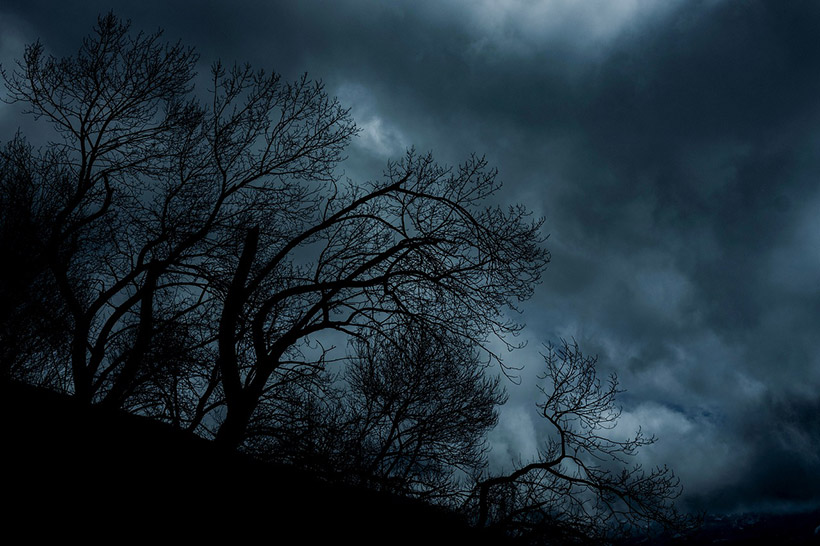[ad_1]
October 31, 2022
As the evenings start beginning much earlier, there’s never been a better time to perfect your night landscape photography skills. While the night sky can play havoc with your camera settings, it also provides a real opportunity to produce some great (and spooky!) shots. Check out our guide below to find out how to take landscape photos at night:
Night landscape photography: What know before you go!
As with all paths of photography, half the battle of getting things right is good forward planning. Things to consider before setting out on a night shoot might include the following:
Check the moon cycle
The moon will have a dramatic effect on our images. A full moon will cut exposure times and make the sky appear more of a blue colour, almost like it’s daytime; however, it will also reduce the number of visible stars. The moon cycle along with the moonrise and set times can easily be found for most locations on the Internet.
Check the weather
Keep an eye on the forecast. Clear skies work well for star trails, but don’t ignore cloudy or partly cloudy nights. The conditions to avoid are mist, fog or rain as the water droplets can settle on the lens surface during long exposures and are almost impossible to detect in the dark.
Light pollution
While light pollution can mean it’s harder to see as many stars, it can also add some much-needed colour to a sky. Light pollution will have the most dramatic effect on a sky when there is a new moon or the moon is yet to rise.

Take a spare torch
I often work in remote locations so I always carry a spare torch with me to find my way back to the car, particularly as my main rechargeable torch often runs out of power. I find a spare wind-up torch works well, as you are then not reliant on battery power.
Charge batteries
Long exposures can quickly drain camera batteries so make sure they are fully charged and that you have a spare.
Night landscape photography: On the night
Step 1. Choose your composition
Arrive at your location while it’s still fairly light to help you easily compose your images. When setting up your camera make sure that your tripod is on secure ground and that it’s not going to move during the long exposure.

Step 2. Shoot RAW
By shooting your images in the Raw format you will be able to apply slight changes to your images at the processing stage. Small adjustments to white balance, exposure and noise can all be applied when converting the Raw files.

Step 3. Set up your camera
Attach your cable release, set your camera to bulb mode and select your aperture. Finally, focus the lens on your subject, and once this is completed remember to switch to manual focusing so that the lens doesn’t start to hunt once it’s dark.
Step 4. Take a test shot
Once it’s dark lock open the camera’s shutter using your remote release. Begin illuminating your subject by flash or torch light. Remember to take a note of the total exposure time and roughly the amount of light applied to your subject.
Step 5. Review your test shot
Review your test shot and work out what areas need more or less light, as getting the correct exposure involves a little bit of trial and error. Once you have decided on what exposure changes to make, simply re-take the shot and keep reviewing the images until you get a result you are happy with.

Night landscape photography: tips to help you take better night photos
Focus using a torch
To aid with focusing in the dark, shine a powerful torch on your chosen subject. Once your camera gets a focus lock, switch your lens to manual focus so that it doesn’t hunt when you press the shutter button.
Compose using high ISO
To compose your night landscape photography shots in the dark, change the ISO setting to your most sensitive available then take a test exposure and recompose as required. Remember to lower your ISO setting back to 100-200 once you’re done.
North star
Take a compass with you and work out the position of the North Star. As the Earth rotates the North Star will appear to stay fixed and the rest of the stars will appear to rotate around it.
Two’s company
Night photography can be quite spooky so having a friend with you will keep you company and make you feel safe.

Dress warm
It can get very cold at night particularly when standing around waiting for long exposures, so warm clothing is essential.
Noise reduction
If your camera has a noise reduction facility, turn it on for your final shot of the evening. Once the main exposure is completed you can pack away your camera while it’s still exposing for the dark frame. When you arrive home it’s exciting to view the completed image for the first time.
Further reading:
Fright night: ghost camera takes spooky London photowalk
Complete guide to outdoor light in photography
Art Wolfe on his approach to night photography
Liam Wong shares new book of cinematic cities at night
How to photograph low light urban landscapes
Follow AP on Facebook, Twitter, Instagram, and YouTube.


[ad_2]
Source link



